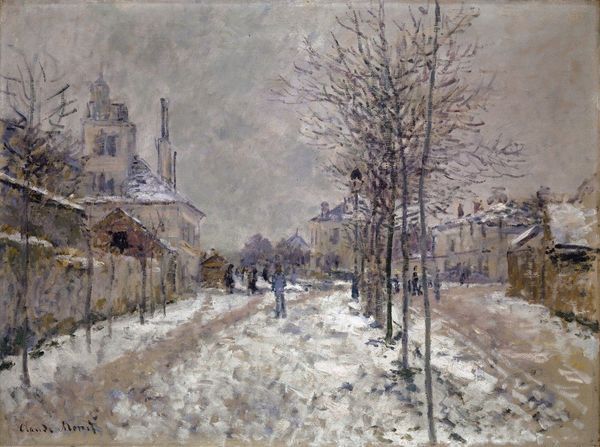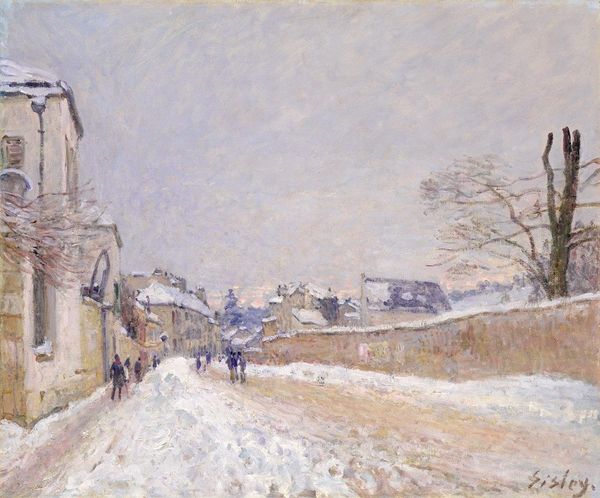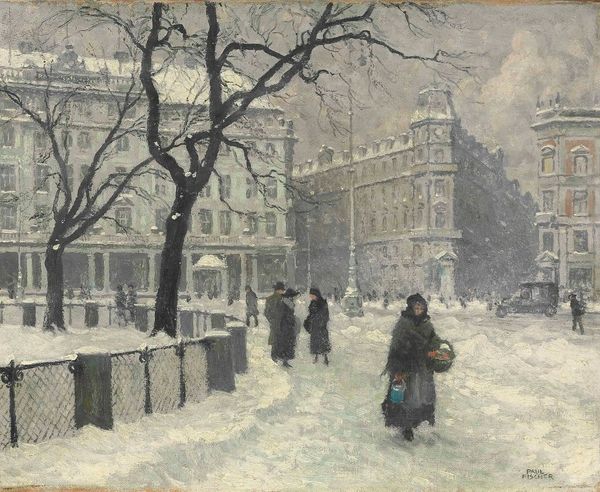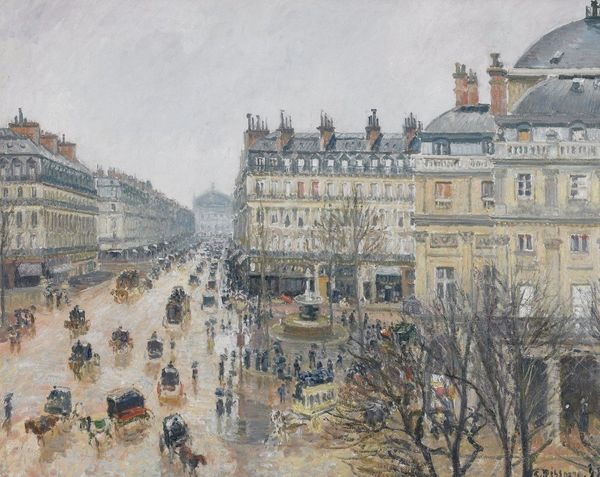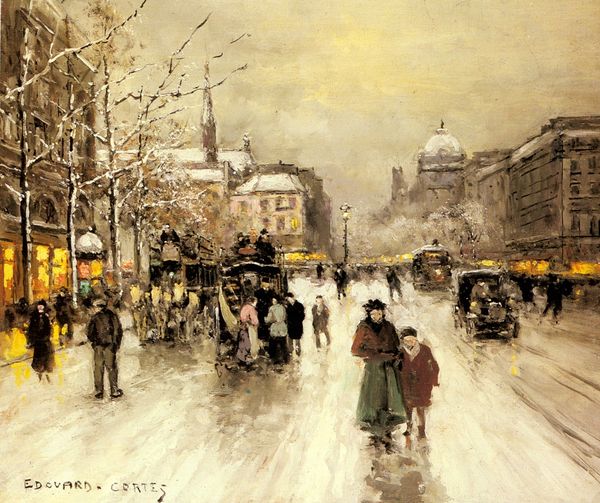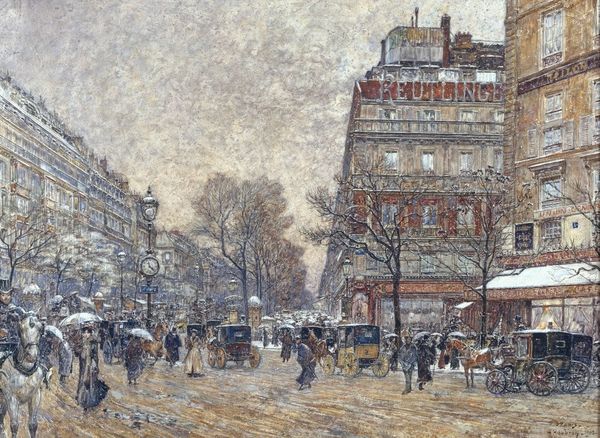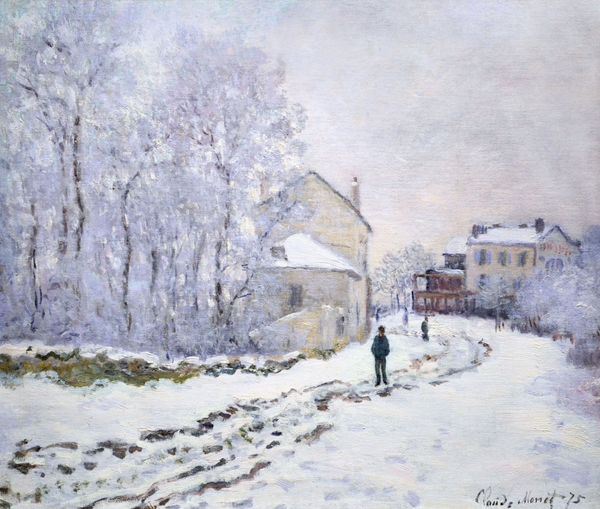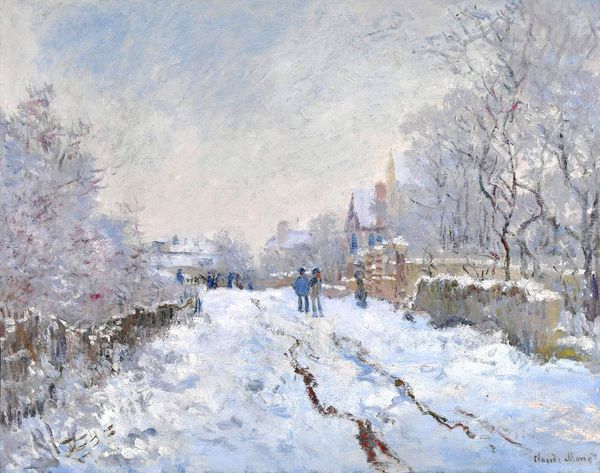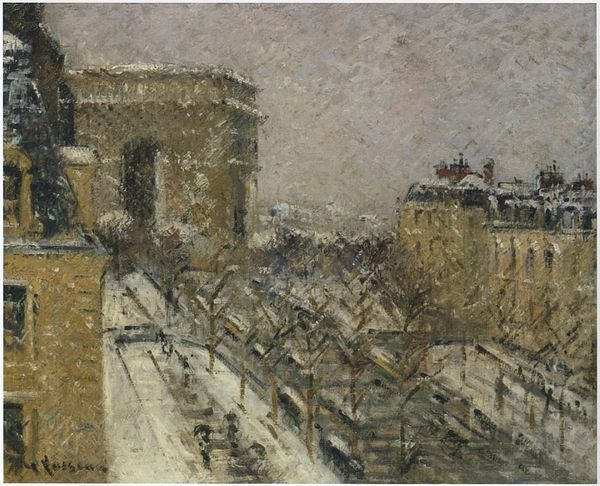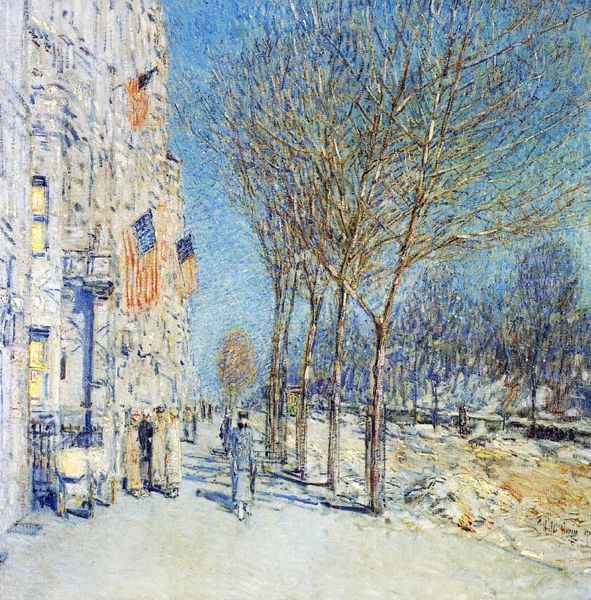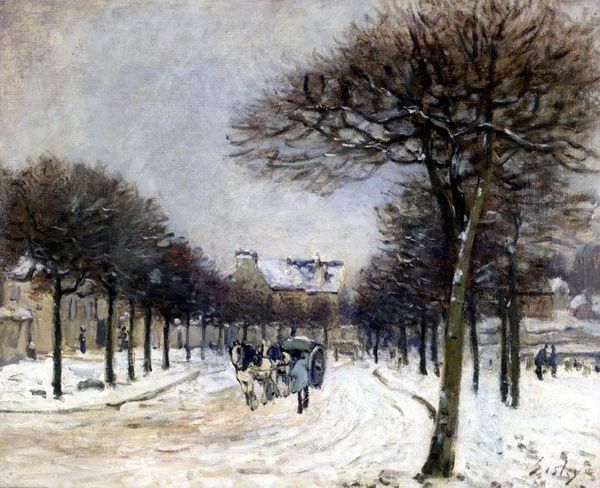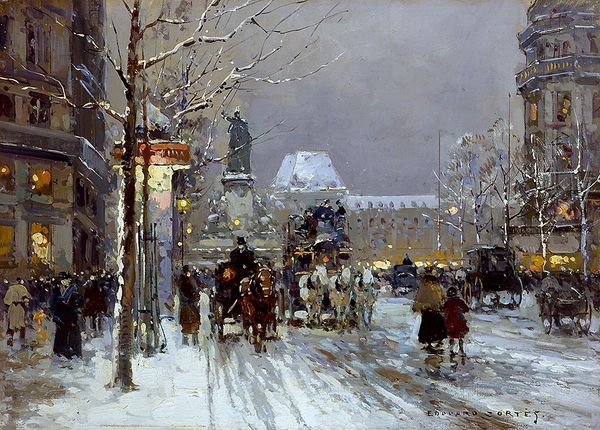
Dimensions: unconfirmed: 610 x 737 mm
Copyright: © Estate of Paul Maze | CC-BY-NC-ND 4.0 DEED, Photo: Tate
Editor: Paul Maze's "Whitehall in Winter" captures a snow-laden London street. The monochrome palette creates a sense of stillness, almost as if time has stopped. What symbols or cultural memories do you find resonate within this scene? Curator: The near-absence of colour signifies austerity, but more than that, the lamp post looms large. Can it be a beacon of hope? A source of light in a time of darkness. Editor: That's a striking reading. Curator: Consider also the distant buildings, they are a steadfast reminder of British resilience, and of the institutions that endure. The car, though, whispers of modernity encroaching upon tradition. What feelings does that juxtaposition evoke in you? Editor: It makes me think about the ever-present tension between progress and history. Curator: Indeed. Through the starkness of winter, Maze reveals the enduring spirit of Whitehall, and perhaps a longing for simpler times. Editor: I hadn't considered the lamp post as a symbol of hope. Thanks for your insights! Curator: My pleasure. Every detail holds a story.
Comments
tate 6 months ago
⋮
http://www.tate.org.uk/art/artworks/maze-whitehall-in-winter-t07697
Join the conversation
Join millions of artists and users on Artera today and experience the ultimate creative platform.
tate 6 months ago
⋮
Paul Maze was an Anglo-French painter who painted English town and country scenes in a late Impressionist manner. Born at Le Havre of French parents, his father collected art and was a friend of various artists, including Raoul Dufy (1877-1953) and Georges Braque (1882-1963). At twelve Maze was sent to school in England to perfect his English, and afterwards worked for ten years in his father's firm importing India rubber and coffee in Liverpool and Hamburg. In the 1914-18 war he fought in a Scottish regiment and met and retained a friendship with Winston Churchill (1874-1965). After the war he lived in Paris, and was friendly with the painters André Derain (1880-1954) and André Dunoyer de Segonzac (1884-1974), although he also made visits to London. In 1921 Maze married a British wife, took British nationality and henceforth lived mainly in England. Here he was a representative of a tradition of French painting that was for a brief period admired as avant garde, notable for a thick application of paint and tonal colouring, with traditional subjects of landscape and still life. With his connections in British society, Maze enjoyed popularity as a half-English survivor of the school of Paris and, like Dufy, often painted race meetings, yachting scenes and the landscape of the southern English counties. In Whitehall in Winter Maze shows the view from the edge of St James's Park in central London, looking over towards Whitehall. The building on the right is Horseguards, designed by William Kent (1685-1748), home of the household cavalry, while further to the left is the Admiralty. The Horseguards parade ground marks one of the centres of British establishment life, surrounded by Government buildings, and the place where every year the monarch receives the army's salute at the Trooping of the Colour ceremony. Maze's treatment of the heavy blanket of snow and its reflection of light may owe something to seeing the pictures of Camille Pissarro (1831-1903). Further reading:Anne Singer, Paul Maze: The Lost Impressionist, London, 1983 Robert UpstoneJanuary 2002
